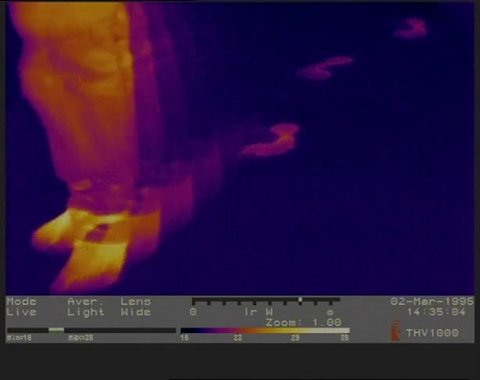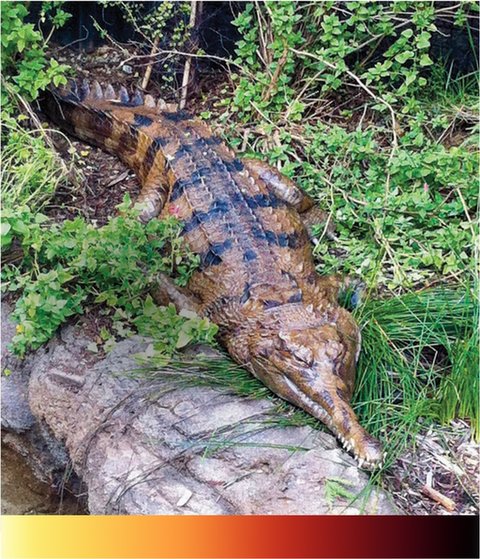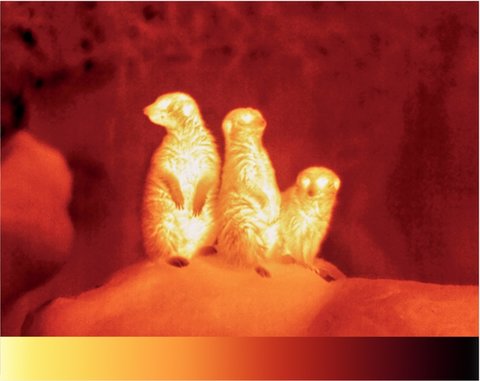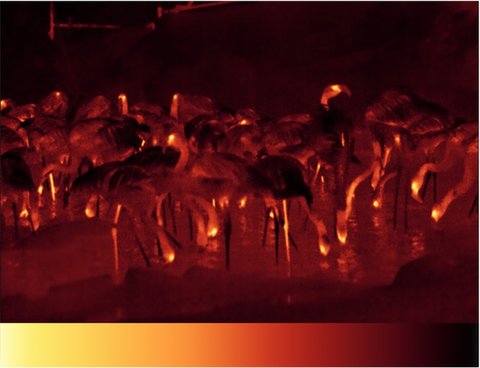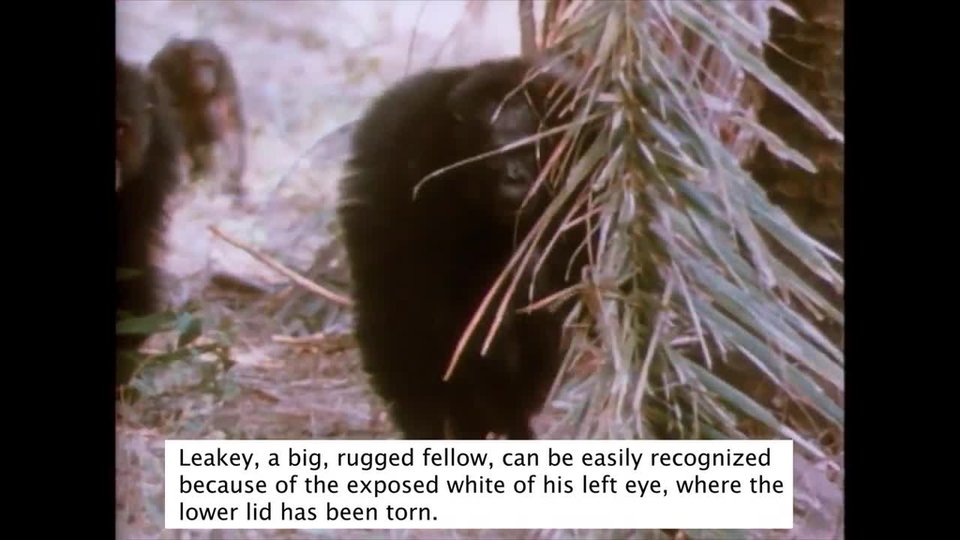SeetheDifference
Haveyoueverheldalizard?Howabouta snakeoraturtle?Ineachofthesecases,anendotherm(you)touchesanectotherm. Theectotherm’sbodytemperatureislikelylowerthanyours.Youcouldn’ttellthatjust bylookingattheanimal,andyouprobablywouldn’tbeabletofeeladifference,either.Butthedifferenceisstarkwhenyoulookatthermalinfraredimages.Theseimagesshowhowcoolorwarmanobjectisbymeasuringtheamountofheatitgives off.
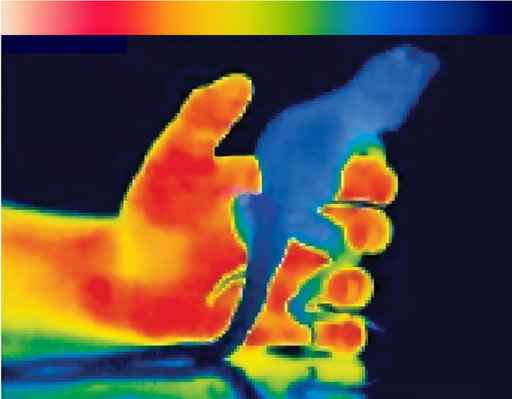
hand
lizard
HOTTER
COLDER
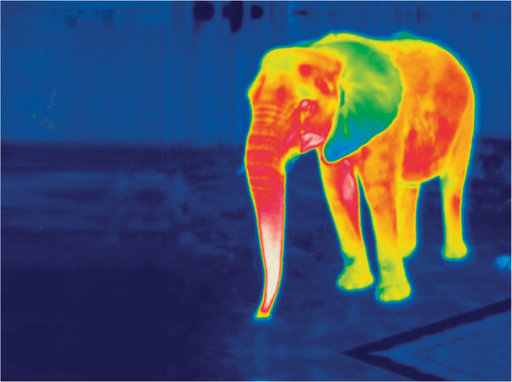
Byfanningitsears,thiselephantbeginstocool down.
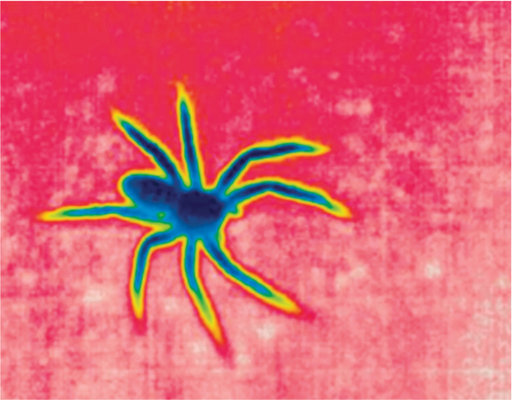
Thisspider’sbodyiscoolerthanits environment.
Lookatthethermalimage above
ofsomeoneholdingalizard.Asthescaleshows,thebrighterthecolor,thewarmerthetemperature.Thebrightredofthehandshowsthatthepersonmaintainsawarm,steadybodytemperature,eventhoughthesurroundingairis cooler.
Thelizardshowsupmostlyasshadesofblue.Beforebeingheld,itappearedasdarkblueorblack,justlikethebackground.Nosurprisethere—thelizard’sbodytemperaturewasthesameasthetemperatureofthesurrounding air.
Butwhathappensasthereptileandmammaltouch?Thereptileabsorbsheatfromtheperson’shand.Thelizard’stailstillappearsdarkbluebecauseitisn’tbeingtouched.Therestofthelizard’sbodyiswarmingnoticeably,withitsfeetandlegsshowingupasgreenandyellow.Howdoyouthinkthelizardwouldappearifthepersoncontinuedtohold it?
Thiscatgeneratesitsownbodyheat.
Itleavesbehindatrailofwarm pawprints.
Watchasapersonleaves
warmfootprintsonacold floor.
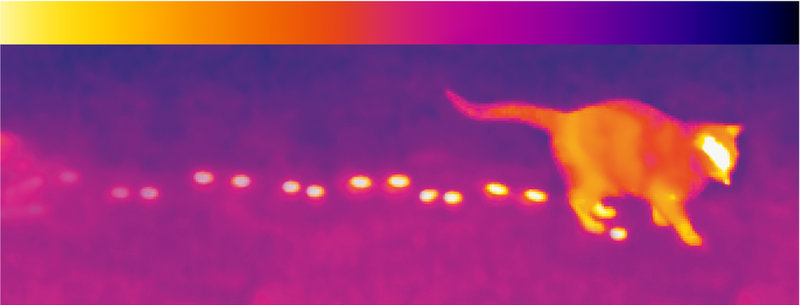
HOTTER
COLDER
Asthisgharialsoaksupthesun’srays,itsbodytemperaturebeginsto rise.
Foodalsoprovidesenergy.Thebodyusesthatenergytomove.Energyfromfoodalsoproducesheat.Inthisway,ananimal’sbodyislikeafurnace,exceptinsteadofburningnaturalgasoroil,thebody“burns” food.
Thefasterananimal’smetabolism,the
moreenergytheanimalhasforkeepingwarmandmovingaround.Whichkindofanimal—ectothermorendotherm—doyouthinkhasthefaster metabolism?
ALivingFurnace
Whycansomeanimalsmaintainaconstantinternaltemperaturewhileotherscannot?Theanswercomesdowntooneword—metabolism.
Ananimal’smetabolismisallofthechemicalreactionsthattakeplaceintheanimal’sbody,andinyourbody,too.Tinymoleculesareconstantlycombiningandbreakingapartinbodycells,formingnewsubstances.Mostofthesechemicalreactionsinthebodyoccurasfoodbreaks down.
Youneedfoodtostayalive.Sodoeseveryotherlivingthing.Foodprovidesthematerialstogrowandtorepairdamagedcells.Forinstance,ifyoucutyourfinger,newcellsgrowoutfromeithersideofthecutandhealit.Thematerialsforthosenewcellscomefromthefoodyou eat.
Thesemeerkatsdon’tneedtowaitforthesun;theyregulatetheirownbodyheatandarealready warm.
Someoftheseflamingoshaveonelegthatishotterthantheother.Whenaflamingostandsononeleg,thatleglosesheat,whiletheotherlegistuckedupnexttoitsbodykeeping warm.
Youguessedit—endotherms.Themetabolismofbirdsandmammals,includinghumans,isfastenoughtogenerateconstantwarmth,allowingtheanimalstomaintainahighbodytemperature.Birdshavethefastestmetabolismandthehighestbodytemperature, 40o Cto 42o C (104o F to 108o F).Canyouthinkofareasonbirdswouldneedsuchafastmetabolism?Thinkabouthowbirdsmove.Thehighrateofmetabolismproducestheenergybirdsneedto fly.
Ontheotherhand,anectotherm’smetabolismisslow.Itcan’tgenerateenoughheattowarmtheanimal’sbody.Anectotherm’smetabolismdependsonthetemperatureof theenvironment.Whentheairwarmsup,anectotherm’smetabolism increases.
